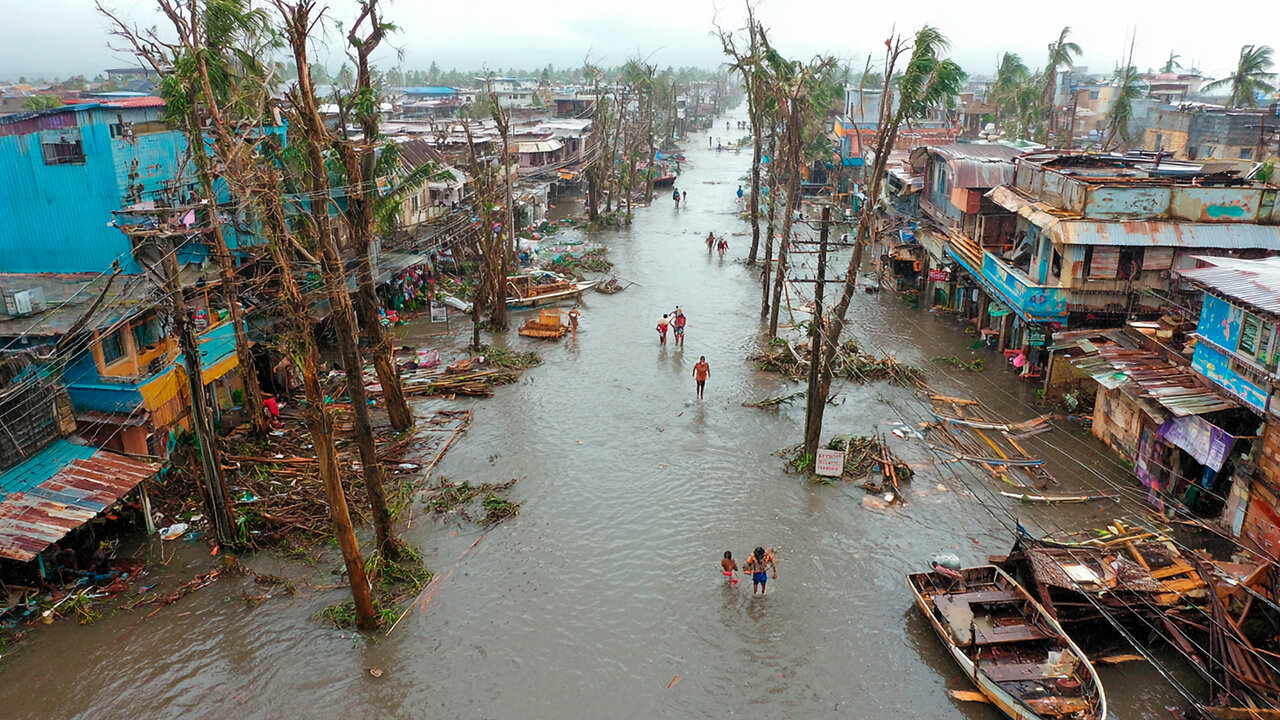Premium Only Content

5th Cyclone This Season: Typhoon Ko-May Devastates Northern Philippines
Tropical Storm Ko-may, known in the Philippines as “Emong,” struck the northern part of the country, causing widespread destruction, transportation disruptions, and mass evacuations. On the morning of July 23, “Emong” was still classified as a tropical depression, located about 65 miles northwest of Northern Luzon. However, by midday it had developed into a tropical storm, and by Thursday morning — into a full-fledged typhoon.
On the evening of July 24, the typhoon hit the coastal city of Agno in Pangasinan Province with maximum sustained winds of 75 miles per hour and gusts up to 103 miles per hour. Heavy rains that had preceded the typhoon had already flooded vast areas of the country, amplifying the consequences.
Due to the storm, approximately 278,000 people were forced to leave their homes, seeking shelter in temporary accommodations or with relatives. Around 3000 residential homes were damaged, and in some northern provinces, maritime and air transportation were disrupted. Schools in the capital, Manila, were closed, and classes were also suspended in 35 provinces of Luzon. More than eighty cities, mostly in the northern part of the country, declared a state of emergency.
This is already the fifth major tropical cyclone to hit the country since the beginning of the rainy season.
Typhoons are causing increasingly severe destruction because they are fueled by the energy of an overheated ocean. The intensity of the rainfall they bring is breaking all records.
More than ten years ago, scientists from AllatRa predicted a sharp rise in the number of natural disasters precisely in our time. The reasons behind this climatic imbalance are discussed in the report “ON THE PROGRESSION OF CLIMATE CATASTROPHES ON EARTH AND THEIR CATASTROPHIC CONSEQUENCES”.
-
 16:43
16:43
ALLATRA
7 days agoWorld Changers Summit — Vatican 2025: Dialogue of Science, Faith, and Humanity | АLLATRA TV
79 -
 1:25:51
1:25:51
DeVory Darkins
5 hours agoDemocrats caught in corruption scheme as JD Vance issues MAJOR UPDATE
143K68 -
 1:48:48
1:48:48
MattMorseTV
5 hours ago $38.36 earned🔴Sedition Charges INBOUND.🔴WH Press Conference.🔴
58.7K153 -
 9:06
9:06
Jamesons Travels
21 hours ago $3.01 earnedMilitary Veterans in Congress Tell Troops to Refuse Trump's Orders
31.9K46 -
 1:42:47
1:42:47
The Bold Lib
3 hours agoBOLDCHAT: Unemployment | AI | Birth Rates w/ANGELA BELCAMINO
22.3K1 -
 20:34
20:34
ArynneWexler
7 hours agoNew Poll: Women Are Done With America | NN8
25.4K40 -
 59:30
59:30
The White House
5 hours agoPress Secretary Karoline Leavitt Briefs Members of the Media, Nov. 20, 2025
62.1K28 -
 2:06:37
2:06:37
Steven Crowder
8 hours agoJasmine Crockett's Epstein Idiocy & the Absolute State of the Democrat Party
603K397 -
 33:37
33:37
The Boomer Effect
18 hours agoBeyond Convenience: The Tyranny Behind Digital IDs
18.2K1 -
 1:15:39
1:15:39
Sean Unpaved
5 hours agoAre Josh Allen & Bills On UPSET ALERT vs. Texans? | UNPAVED
38.7K